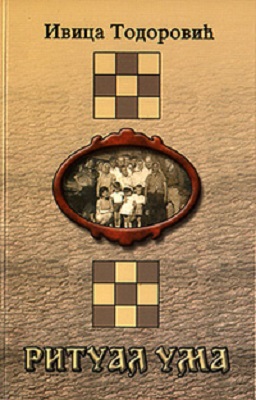Ритуал ума
The Ritual of the Mind
Meaning and Structure of the Procession Rite
Author(s): Ivica R. Todorović
Subject(s): Anthropology, Social Sciences, Customs / Folklore, Cultural Anthropology / Ethnology
Published by: Етнографски институт САНУ
Summary/Abstract: Procession rite (in the scope of village „slava”, patron saint celebration) represented one of the most complicated ritual complexes of Serbian folk religion. This rite had the function of efficient social uniting of the entire village community, as well as the function of providing for favorable weather conditions and the fertile tear. The studied phenomenon is complex and has several semantic layers, which are complementary and jointly form a unique mythic-ritual text. The most significant terms of reference of the procession rite mythic text to be singled out are: 1) magic circle, 2) sacred tree, 3) ruler of climatic phenomena. Cyclic model of procession is based on ancient agrarian cultures concept that the universe, namely – the totality of space significant for human community, is the unique organism, which is renewed periodically (in the case of procession) by resacralization of sacred object which are related to a supernatural being, patron of the entire area. Deeper mythological layer is in connection with the global annual cycle of customs, and contains the elements of various cults. Likewise, in the procession rite archetype mythological context is clearly expressed, based on specific structural patterns of universal manifestations. Throughout various interdisciplinary researches the existence of specific structural patterns has been noticed. Because of their elementariness and diffusion they could be called universal or primary structure of thinking. Directly related to that, this paper – based on structural analytic approach – pays attention mostly to structural models of ritual procession, that is – different ways in which the routes of the ritual procession are organized (which no investigator has dealt with so far). Therefore on the basis of the adequate research sample, basic (simple) and paradigmatic standard model of ritual procession, as well as the dynamics of the range of transitory forms were singled out – and among the most complex models of ritual procession structural patterns were noticed, which were identical to the forms determined in the context of various myths and rituals, language and logical models – defined by the (above mentioned) syntagm: primary structure of thinking, which represents the problem of extraordinary significance for the contemporary ethnological – anthropological research. Namely – both models are based on dual bipartite structural pattern, where the relation of two halves of the structural pattern is based on complementariness, and the relation of the halves of the other one on contras
- Print-ISBN-10: 86-7587-031-0
- Page Count: 495
- Publication Year: 2005
- Language: Serbian
- Sample-PDF
- Table of Content
- Introduction
- eBook-PDF

